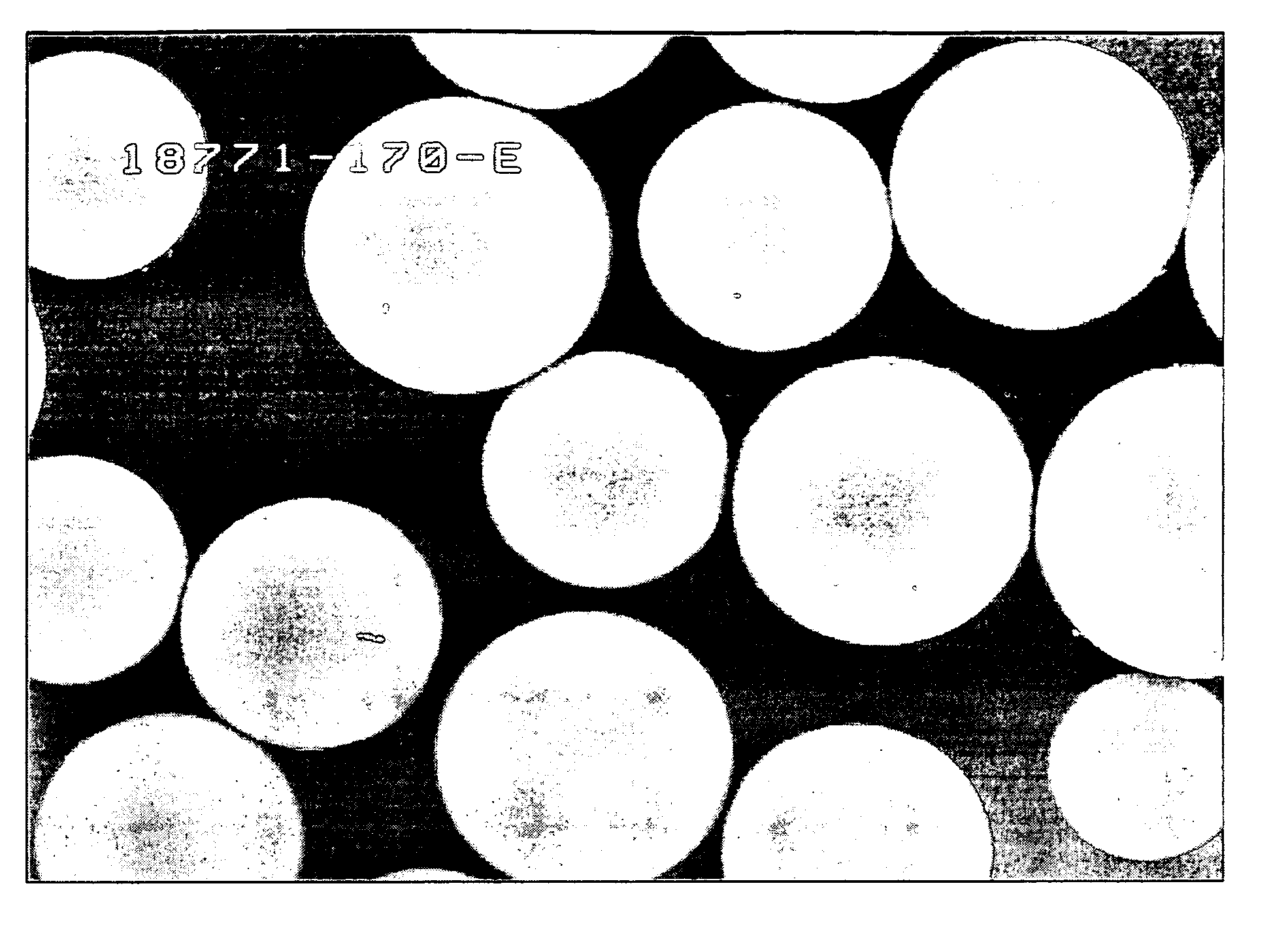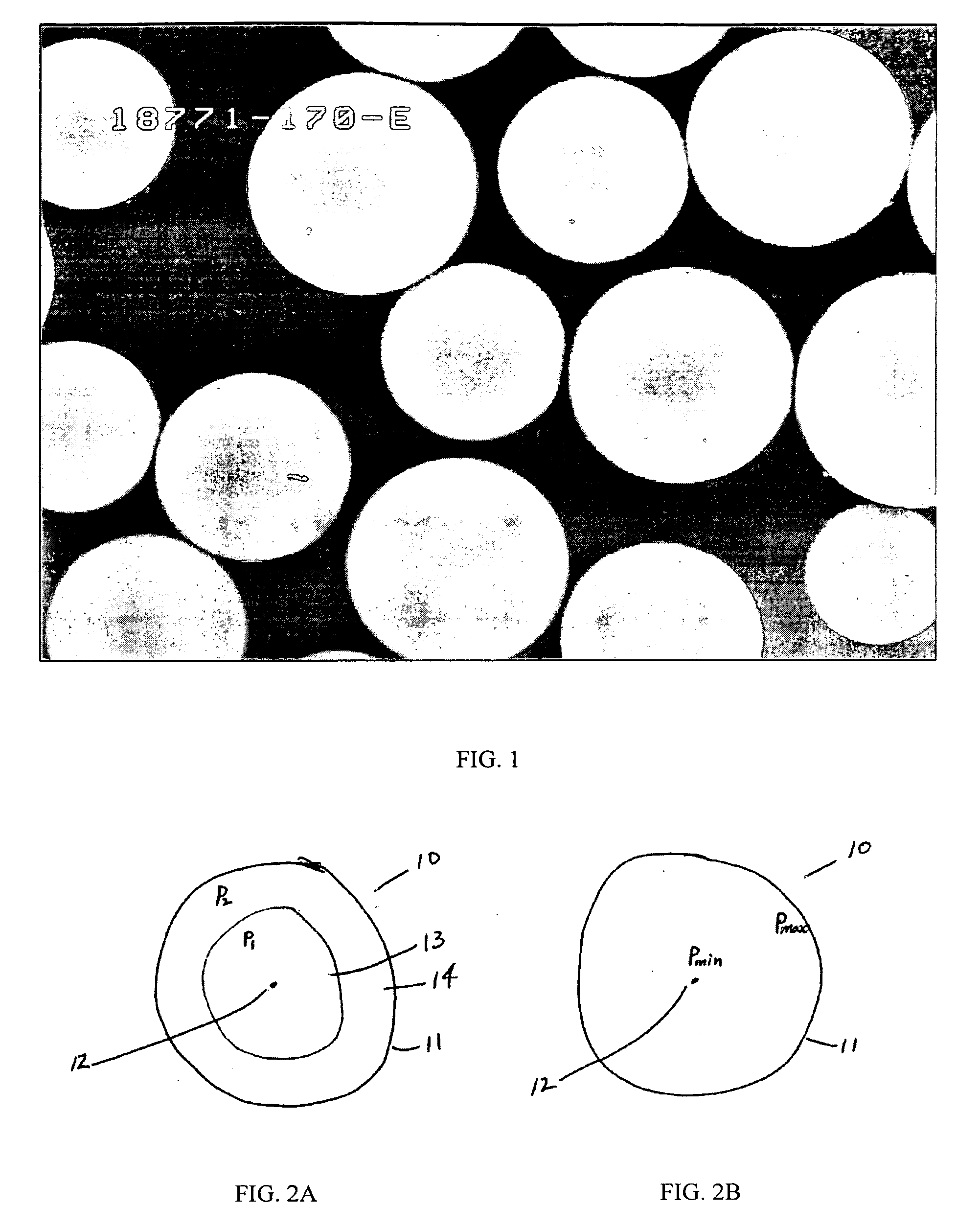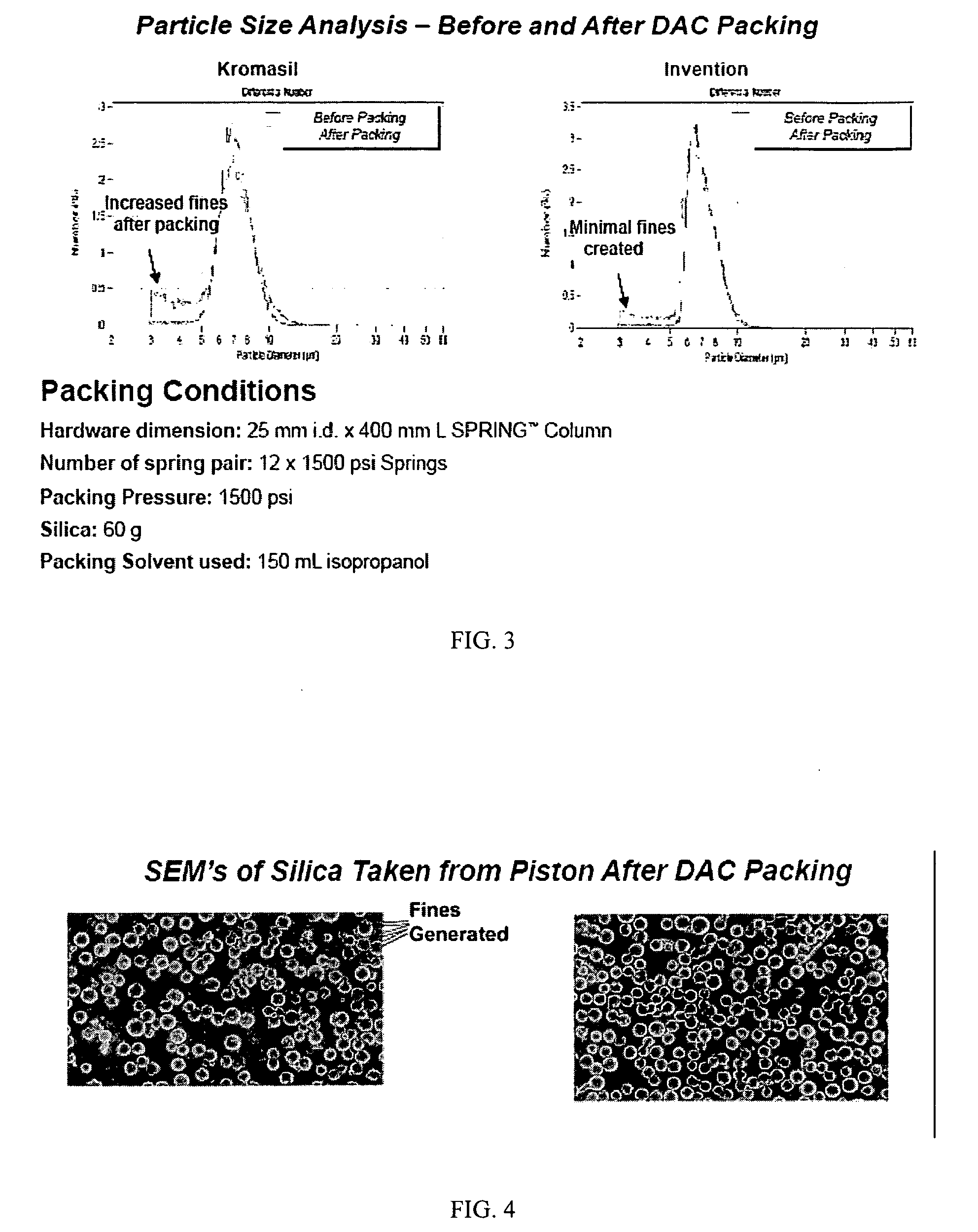Silica particles and methods of making and using the same
a technology of silicon particles and silicon particles, applied in the field of silicon particles, can solve the problems of reduced column efficiency, non-uniform fluid flow through a column, and processing problems, and achieve the effects of low elastic deformation, efficient packing, and high plastic deformation
- Summary
- Abstract
- Description
- Claims
- Application Information
AI Technical Summary
Benefits of technology
Problems solved by technology
Method used
Image
Examples
example 1
Preparation of A Partially Hydrolyzed Material (PHS)
[0077]230 g of a 0.1 M HCl (aqueous) solution is added to 5,000 g of SILBOND™ 40 while stirring. Then, 1075 g of EtOH is added to this mixture while stirring to overcome the immiscibility between the SILBOND™ 40 and the aqueous phase. The reaction proceeded spontaneously at ambient temperature.
[0078]The resulting partially hydrolyzed material (PHS) is distilled to remove any EtOH added to the mixture or formed as a by-product during the hydrolysis step. The distillation is performed under vacuum (<100 Torr) at 90° C.
example 2
Preparation of “Small Molecule” Silica Particles Using Batch Mixing
[0079]3,800 g of the distilled PHS formed in Example 1 is poured into 14,900 g of 30 wt % IPA / water (previously prepared and allowed to sit for at least 16 hours to allow for degassing). A Cowles mixer is started and set to 1160 rpm for 5 minutes to complete the emulsification. Then, 378 g of 30 wt % NH4OH is added (all at once) while the mixing is continued. The solution is mixed at 1160 rpm for an additional 20 minutes during which particle gelation is completed. The silica suspension is left to settle overnight.
[0080]On the next day, the silica suspension is filtered and the resulting silica cake is re-suspended with 12 liters of deionized H2O to remove any excess alcohol and / or ammonia. The silica solution is left to settle overnight and decanted the next day. This procedure is repeated once again.
[0081]The silica cake from the decanted solution is re-suspended in about 1 liter of deionized water to make a stirra...
example 3
Preparation of “Small Molecule” Silica Particles Using an In-Line Static Mixer
[0083]The distilled PHS formed in Example 1 (950 ml / min) and 30% IPA / 1% NH4OH aqueous solution (4,090 ml / min) are mixed through 15.2 cm (6 in.) diameter static mixers. The resulting slurry of silica particles then flowed into a container that is agitated. The silica suspension is left to settle overnight.
[0084]On the next day, the silica suspension is filtered and the resulting silica cake is re-suspended with 12 liters of deionized H2O to remove any excess alcohol and / or ammonia. The silica solution is left to settle overnight and decanted the next day. This procedure is repeated once again.
[0085]The silica cake from the decanted solution is re-suspended in about 1 liter of deionized water to make a stirrable slurry. The stirred slurry is then heated to 75° C. for 90 minutes. The aging is stopped with the addition of about 12 liters of ambient temperature deionized water. The suspension is then filtered t...
PUM
| Property | Measurement | Unit |
|---|---|---|
| pore diameter | aaaaa | aaaaa |
| pore diameter | aaaaa | aaaaa |
| particle size | aaaaa | aaaaa |
Abstract
Description
Claims
Application Information
 Login to View More
Login to View More - R&D
- Intellectual Property
- Life Sciences
- Materials
- Tech Scout
- Unparalleled Data Quality
- Higher Quality Content
- 60% Fewer Hallucinations
Browse by: Latest US Patents, China's latest patents, Technical Efficacy Thesaurus, Application Domain, Technology Topic, Popular Technical Reports.
© 2025 PatSnap. All rights reserved.Legal|Privacy policy|Modern Slavery Act Transparency Statement|Sitemap|About US| Contact US: help@patsnap.com



